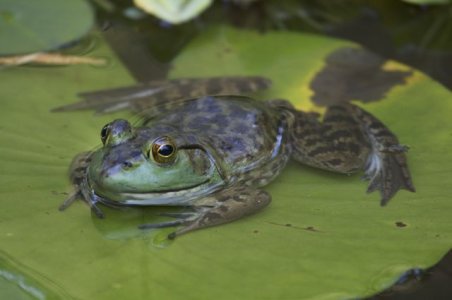A resting frog can deform the lily pad on which it sits. The weight of the frog applies a localised load to the lily pad (which is supported by the buoyancy of the liquid below), thus deforming the pad. Whether or not the frog knows it, the physical scenario of a floating elastic sheet subject to an applied load is present in a diverse range of situations spanning a spectrum of length scales. At global scales the gravitational loading of the lithosphere by mountain ranges and volcanic sea mounts involve much the same physical ingredients. At the other end of the spectrum is the use of Atomic Force Microscopes (AFM) to measure the properties of graphene and biological membranes, such as skin.
Information concerning the material properties of the floating elastic layer, and the physical properties of the fluid substrate, can be gleaned from the shape that the layer takes when sat upon.
Taking inspiration from the frog, Oxford Mathematicians Finn Box and Dominic Vella poked thin elastic sheets floating on a liquid bath and studied their resultant deformation. They found that for small loads, the resultant deformation remains axi-symmetric about the point of poking. In this case, the deformation is controlled either by the bending of the sheet or its stretching – the difference depends on the thickness of the sheet. For sufficiently-high loads, a radial wrinkle pattern forms as the sheet buckles out-of-the-plane. Such wrinkle patterns are of interest not merely for their aesthetic appeal, but also as a means of generating patterned surfaces with tunable characteristics that can be used as photonic structures in photovoltaics, amongst other things.
And where does the frog sit in all of this? Well, the frog rests at the smaller end of the length scale spectrum and although the large and small scale situations contain the same physics, the latter are additionally affected by the surface tension of the liquid. Perhaps fortunately for the frog, it isn’t heavy enough to cause the lily pad to wrinkle. The researchers believe that they may be, however, and are looking forward to testing their findings next time they encounter a lily leaf large enough to support them.
Finn and Dominic's research will be published shortly.


